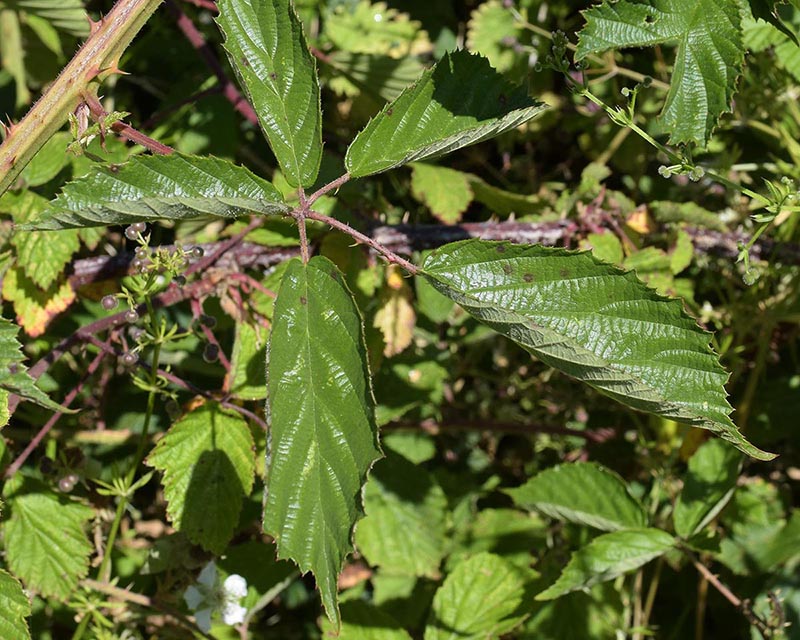
Rubus moylei – Series Micantes
back to Alphabetical index · Taxonomic index
This bramble is probably the commonest species in Hampshire, where it is often abundant in shady woodland habitats, but it also sometimes grows in more open situations. It is also frequent in the well recorded areas of south Wales and south Lancashire but records are more scattered over other parts of southern England. Its most distinctive features are the combination of flowers with white or very pale pink petals, red styles and long stamens, together with the distinctive terminal leaflet which narrows towards the base in a V
shape.


The widely spaced broad petals, which are often turned in at the corners, give the flowers a particularly distinctive look (see images above and below). Note the pale pink colour of the flowers in bud in the first photo above.




This species sometimes has 6 or 7 petals in the flower.


The floral branches are perpendicular to the rachis (the main stem of the flowering branch) and both are clothed with dense hairs and red glands. The prickles of the floral branches are long and fine.

The photo below left shows the progression of the sepals from erect in bud to reflexed (folded down) after flowering, but then becoming patent (sticking out) in fruit. If using the keys in Edees & Newton's Brambles of the British Isles one needs to decide whether sepals are erect, patent or reflexed; however, one should only look at those on flowers that have recently gone over
, before the fruit begins to ripen. This is not easy to assess, even in a fresh specimen!

Below: stem leaf from a bush growing in the open and one from a shade-grown bush below. Note the distinctive narrowing of the terminal leaflet towards the base, but the leaf base itself is rounded.



Leaf from an odd-coloured plant seen on heathland in Somerset:

Leaflet undersides are usually pubescent, giving a greenish-grey appearance, especially those growing in sunny situations.


Stems are bluntly angled and slightly furrowed, green or turning reddish brown in sun. The main prickles on the angles are fairly short and slender, and not too dense. Note also the presence of pricklets (small prickles) on the upper face of the stem in some of the images below. Like all Micantes, R. moylei usually has some long-stalked glands on the stem, but they can sometimes be sparse. The stems are usually moderately hairy.



Like many other brambles shade-grown stems can have very poorly developed glands and hairs:

The stem below was photographed near the base of a well-grown plant in deep shade. The prickles and pricklets are particularly well developed, but it still has frequent hairs and some long-stalked glands. Normally, however, it is best to look only at stems further up the plant for identification and collection purposes (i.e. a section of stem below the first three or four sets of leaves).
